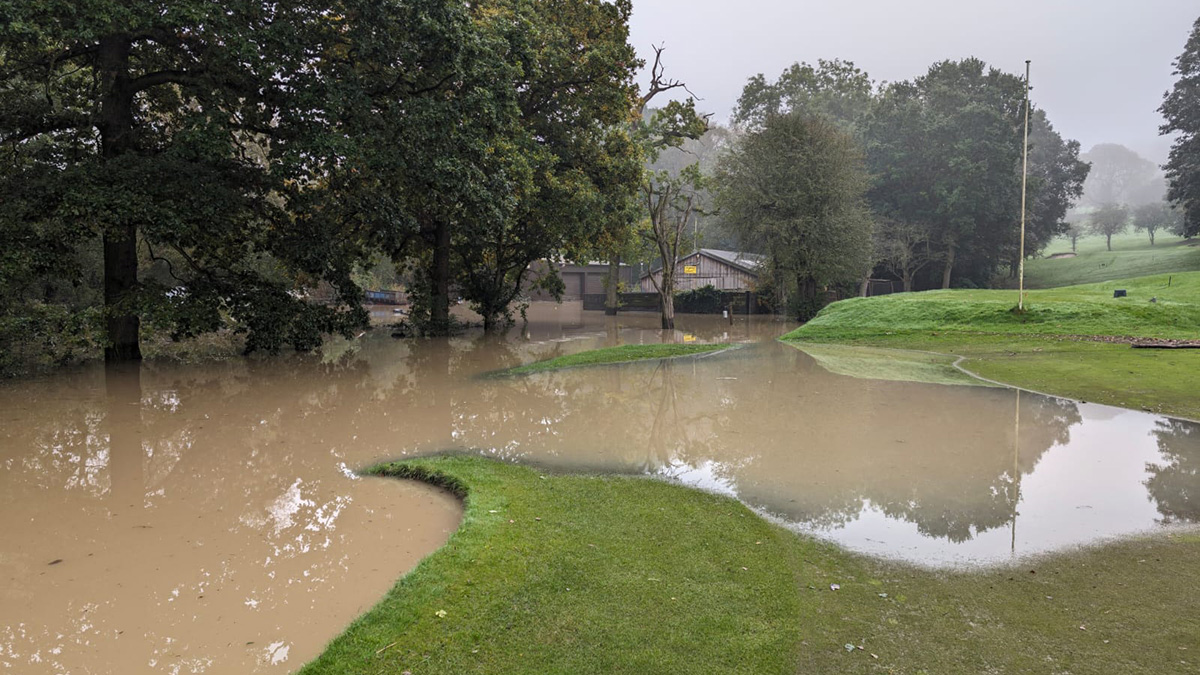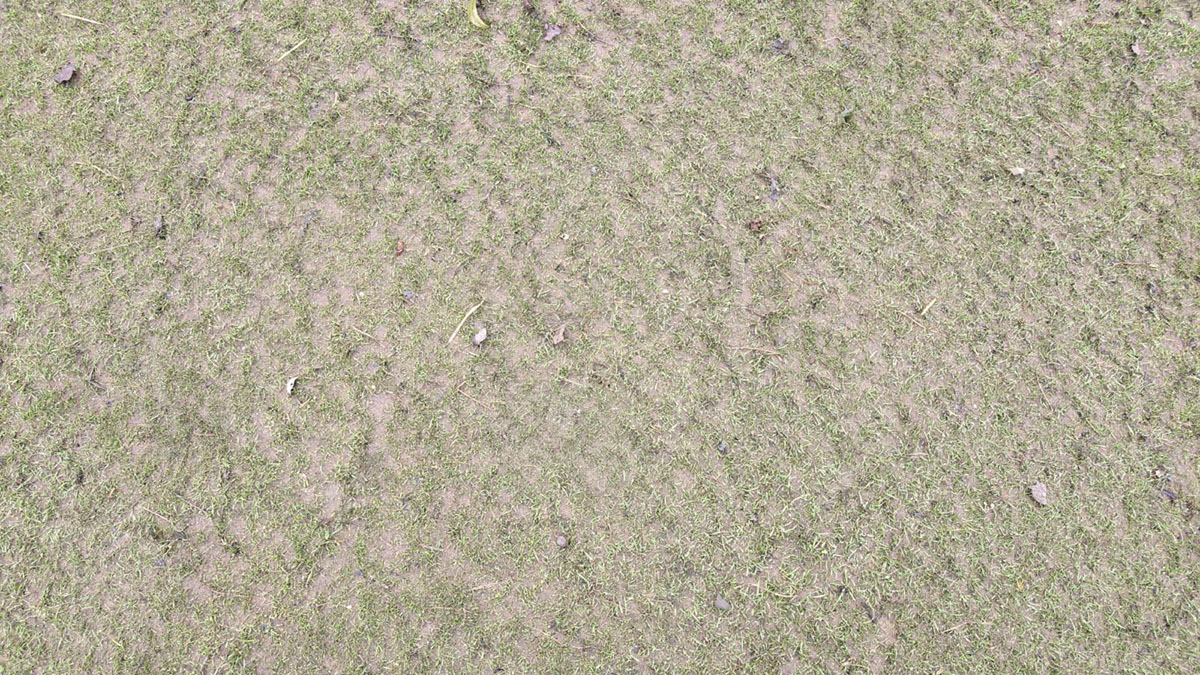- Homepage
- News and Features
- What happens when a golf course is exposed to heavy and persistent rain?
What happens when a golf course is exposed to heavy and persistent rain?
Paul Woodham is head of agronomy for Europe at The R&A and explained what happens to golf courses during and after heavy rainfall.
If you're wondering what greenkeepers do when it rains or why the course doesn't immediately reopen when the weather improves, Paul has the answers.

Maintenance schedules will be severely disrupted especially with the current conditions persisting well into the period when pre-season maintenance is due to commence.
Paul Woodham
Head of Sustainable Agronomy - Europe, The R&A
Golfers need to understand the current challenge posed by the persistent, excessive and often intensive rainfall that has dominated the UK climate over the winter. These conditions have numerous impacts on the golf course and the greenkeeping operations.
Parkland courses with clay based soils have been particularly vulnerable even where there is drainage. The volume of rain has commonly overwhelmed the natural drainage potential of soils and drainage systems, especially aging designs which have had additional connections tapping into existing drains that were never designed to calculate maximum flow rates.
In addition, surface infiltration and upper profile percolation rates will be massively compromised by the impact of traffic smearing the surface, especially where grass cover has thinned, and with silt/clay capping profiles. A prolonged period of prolific worm casting creates other problems in terms of silt/clay contamination at the surface. Even sandy heathland, chalk downland and links courses have been subjected to impact of intensive rain especially where courses are at risk of flooding.
What happens when the course succumbs to flooding and excessive rainfall?
Dealing with contamination issues such a litter and debris are the immediate concerns. There may be sewer debris contamination from blown drains so ensure there is a risk assessment in place to tackle the clean-up operation. Visible debris may include aggregates such as stone washed from paths or adjacent roads. This clean-up is harder to deal with but any buried stone left in the turf base could be damaging to mowing equipment and golf clubs taking a divot. Such levels of serious contamination are rare and can normally be dealt with by painstaking shovelling and brushing.
Irrigation control boxes are unfortunately ready-made water traps. It is important to clean out any soils that have migrated into the boxes and have buried the valves and electrics such as wires and solenoids. Check the function of the electrics at an early stage, not just in the spring commissioning works scheduled right when you need the system operating.
What about the damage beyond the visible issues of litter and loss of grass cover where the flooding has suffocated the turf? The physical contamination left from flooding may include silt deposits. These can be damaging to the longer-term surface drainage of turf and bunkers.

Bunkers
Silt and fine soil's contamination of bunker sand is more visible than deposits laying within the turf base. However, damage will be sustained to the physical characteristics and playability of sand. The sand may need to be stripped out of the bunker and replaced in the worst cases of flooding. Many courses are investing in redesigning and renewing the construction profiles of bunkers to include a permeable membrane that will protect the bunker from contamination of the sand from below, thereby improving drainage and overall maintenance and playability. To date, I am not aware of problems where silt deposits have entered the bunker sand and migrated into the membrane to block or slow the drainage but it would be wise to remove any of the soil contamination debris from the sand surface or replace the sand before this has a chance to damage the membrane.
Turf
Silt deposits can have the same damaging impact if the fine soils create a layer that interrupts the uniformity of the upper profile soil texture and structure. Most deposits will be compatible with the native soils, forming low-lying heavier soils where commonly exposed to flooding. The deposits can be problematic if they cap drainage profiles or previously sand dressed areas. Some form of removal (scarification, coring) or penetration (aeration) may be required in advance of redressing to dilute the contamination.
Flood damage can adjust the soil chemistry, often not visible until there is evidence of turf decline. Soil cores extracted from affected areas sometimes exhibit anaerobic conditions forming due to the soil structure degrading. Salinity levels may have increased to surpass a threshold whereby longer-term damage to plant health and soil structure could occur. Those affected by coastal flooding may need to check the physical and chemical status of soils before implementing aeration and soil amendments such as Gypsum, or investing in overseeding only to see less salt-tolerant grass species fail.

Recovery
The last point to consider is how to apply recovery aeration, topdressing and managing play back on to damaged areas. This is perhaps as simple as ‘be patient’ and ‘manage your expectations’. There is little point in aerating saturated soils even if water is perching in the upper profile. The added weight of aeration equipment, or allowing soft ground to be pulverised by play, could be counterproductive. Apply corrective aeration when the soils are receptive to treatment.
Sand dressing may need to be applied to help dilute silt contaminated turf base conditions but the same applies; wait until conditions are conducive to achieving the desired result. Correct the damage and then consider what measures, such as design changes, can be applied to prevent repeat damage.
Impact on greenkeeping operations
Greenkeeping teams will see the impact of the conditions even more than the golfer. Maintenance schedules will be severely disrupted, especially with the current conditions persisting well into the period when pre-season maintenance is due to commence.
Regular aeration schedules have been interrupted as ground and soil conditions have been unreceptive to the treatments usually applied. There is a risk of doing more harm than good with ill-timed aeration smearing the soil profile or even adding compaction, let alone damaging the turf. Operations such as coring or deep solid tine aeration that is performed on wet soils will cause additional surface softening at a time when growth and recovery is very limited.
Winter project work such as construction is likely to have been delayed because of the conditions. Wet ground conditions have restricted the ability to transport materials such as aggregate and turf across the course without damage to the haulage routes. The operation of heavy plant such as excavators is equally challenged by the conditions. Greenkeepers will often resort to heavy lifting and detailed hand work just to keep somewhere on track but delays are inevitable.
Other more routine operations have been affected. An example would be the inability to maintain a schedule for spraying. This may interfere with the planned applications which are an important part of Integrated Disease Management strategies. The golfer is therefore likely to see the impact of this with the risk of increased scarring or weakened turf.
The R&A Sustainable Agronomy Team offers expertise each month in Greenkeeper International
Author


